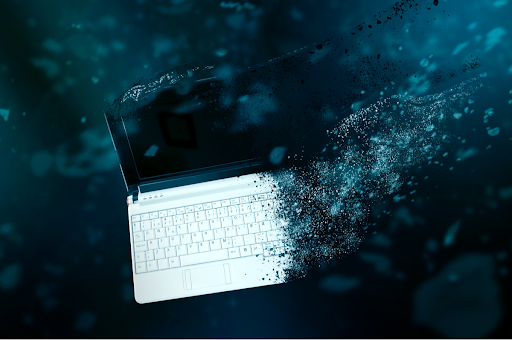The Necessary Nature of Information Destruction in Upholding Computer Safety And Security Solutions and Protecting Against Unauthorized Gain Access To
In a period where information violations and identification burglary are increasingly prevalent, the importance of efficient data destruction can not be overemphasized. Various methods, from data cleaning to physical devastation, serve as essential safeguards against unapproved access.
Importance of Information Devastation
In a significantly digital globe, the relevance of information damage can not be overemphasized. As companies accumulate huge amounts of sensitive info, the possible consequences of falling short to correctly get rid of and manage of that data come to be significantly severe. Data violations, identification burglary, and company reconnaissance position significant hazards, highlighting the need of efficient data destruction practices.

Moreover, as modern technology develops, so also do the methods through which malicious actors look for to exploit sensitive details. Organizations should continue to be alert and aggressive in their information destruction methods to guard against these developing threats. By prioritizing information destruction, companies not only protect their assets yet additionally foster count on amongst stakeholders and clients, demonstrating a commitment to liable information monitoring and safety and security methods.
Approaches of Effective Information Destruction
To guarantee the irreparable and complete destruction of sensitive data, organizations can employ a selection of reliable approaches customized to their details needs. One of the most common methods is data wiping, which includes utilizing specialized software program to overwrite existing information multiple times, making recovery essentially difficult. This is particularly beneficial for solid-state drives and tough drives, where traditional deletion methods are insufficient.
One more effective method is degaussing, which makes use of solid electromagnetic fields to interrupt the magnetic domains on storage space media, providing the information irretrievable. This technique is especially suited for magnetic storage devices, such as tape drives and tough disks.
Physical devastation is likewise a practical option, involving the shredding, squashing, or incineration of storage devices. This approach assurances that data can not be recovered, making it ideal for companies managing highly delicate info.

Compliance With Data Security Rules
Organizations must not only concentrate on reliable data damage approaches yet also guarantee conformity with information protection policies that regulate exactly how delicate details is dealt with and disposed of. Sticking to these regulations is crucial for guarding individual information and maintaining customer trust. Laws such as the General Information Security Regulation (GDPR) in the European Union and the Wellness Insurance Transportability and Responsibility Act (HIPAA) in the United States impose strict standards on information monitoring, that include requirements for the secure disposal of delicate details.
To achieve conformity, companies should apply detailed data devastation plans that line up with these legal structures. This includes recognizing data that needs devastation, establishing protocols for protected methodsâEUR" such as shredding physical media or making use of software program why not try these out that satisfies industry requirements for information wipingâEUR" and keeping detailed records of destruction activities. Routine audits should be conducted to make certain adherence to these plans and to identify any kind of possible locations for enhancement.
Failing to abide by data defense policies can lead to substantial lawful ramifications, including large fines and damages to a company's online reputation. Incorporating conformity right into data destruction techniques is not only a legal commitment but also an essential component of a durable information safety approach.
Repercussions of Poor Data Handling
Poor information handling can cause extreme effects that prolong beyond instant functional setbacks. Organizations may deal with significant financial losses due to data violations, which usually result in expensive removal efforts, lawful fees, and regulative fines. These economic ramifications can hinder and strain resources growth, inevitably impacting an organization's bottom line.
In addition, poor data handling can significantly damage a company's track record. Companions, stakeholders, and consumers may lose trust in an entity that falls short to shield delicate details, causing decreased consumer loyalty and prospective loss of business opportunities. This disintegration of trust can take years to reconstruct, if it can be recovered at all.
In addition, companies can encounter lawful implications occurring from non-compliance with data protection laws. Such offenses may lead to examinations and penalties, compounding the financial burden and additional staining the organization's picture.
In the world of cybersecurity, insufficient data monitoring techniques can create susceptabilities that make systems a lot more at risk to unauthorized access and cyberattacks. Ultimately, these effects underscore the important news significance of executing durable data managing procedures to protect sensitive details and maintain business honesty.
Finest Practices for Secure Information Disposal


To start with, data must be identified according to its level of sensitivity. Sensitive information calls for a lot more strenuous disposal approaches, such as shredding physical documents and making use of advanced software application for electronic information cleaning. Employing certified data destruction solutions makes sure compliance with market guidelines and standards.
Secondly, organizations must carry out an information disposal policy that mandates normal audits. This policy should lay out the treatments for information retention and devastation, guaranteeing that out-of-date information is dealt with quickly and safely. Educating staff members on these protocols is necessary to fostering a society of security understanding.
Finally, maintaining in-depth records of disposed data enhances accountability and supplies a clear audit trail. This documentation must consist of the kind of data damaged, the approach used, and the day of disposal.
Final Thought
Finally, the imperative of effective information destruction is obvious in its role in enhancing computer system safety and security services and minimizing unapproved accessibility threats. Adopting robust techniques such as information cleaning, degaussing, and physical damage, alongside compliance with laws like GDPR and HIPAA, is vital for safeguarding sensitive information. Neglecting proper information disposal techniques can bring about severe repercussions, including data breaches and legal repercussions. Executing ideal methods in protected information disposal ultimately strengthens business integrity and customer trust Bonuses fund.
In an era where data violations and identification burglary are progressively common, the relevance of effective data destruction can not be overemphasized. data destruction. Data breaches, identification theft, and company reconnaissance pose considerable dangers, emphasizing the necessity of effective data damage practices
Compliance with laws such as GDPR and HIPAA mandates that organizations implement rigid data security procedures, including the secure damage of data at the end of its lifecycle.
By prioritizing data destruction, business not only safeguard their assets yet additionally foster count on among clients and stakeholders, demonstrating a dedication to liable data monitoring and security practices.
Organizations have to not just focus on efficient data destruction techniques however additionally make sure conformity with information defense guidelines that control how sensitive details is dealt with and disposed of.